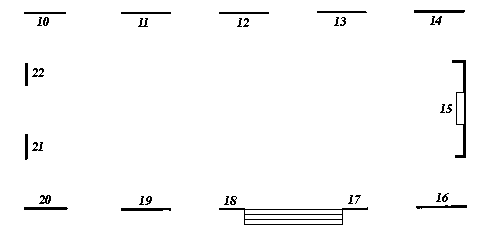ROCCO, SCUOLA DI SAN 411
the knee of St. Elizabeth, is a curious instance of the habit of the painter to relieve his dark forms by a sort of halo of more vivid light which, until lately, one would have been apt to suppose a somewhat artificial and unjustifiable means of effect. The daguerreotype has shown-what the naked eye never could-that the instinct of the great painter was true, and that there is actually such a sudden and sharp line of light round the edges of dark objects relieved by luminous space.
Opposite this picture is a most precious Titian, the ďAnnunciation,Ē full of grace and beauty. I think the Madonna one of the sweetest figures he ever painted. But if the traveller has entered at all into the spirit of Tintoret, he will immediately feel the comparative feebleness and conventionality of the Titian. Note especially the mean and petty folds of the angelsí drapery, and compare them with the draperies of the opposite picture. The larger pictures at the sides of the stairs by Zanchi and Negri are utterly worthless.
Second group. On the walls of the upper room.
 |
10. Adoration of Shepherds.17. Resurrection of Lazarus.
11. Baptism.18. Ascension.
12. Resurrection.19. Pool of Bethesda.
13. Agony in Garden.20. Temptation.
14. Last Supper.21. St. Rocco.
15. Altar Piece: St. Rocco.22. St. Sebastian.
16. Miracle of Loaves.
10. The Adoration of the Shepherds.1 This picture commences the series of the upper room, which, as already noticed, is painted with far less care than that of the lower. It is one of the painterís inconceivable caprices that the only canvases that are in good light should be covered in this hasty manner, while those in the dungeon below, and on the
1 [A photograph of this picture is reproduced at p. 52 of J. B. S. Holbornís Tintoretto.]
[Version 0.04: March 2008]